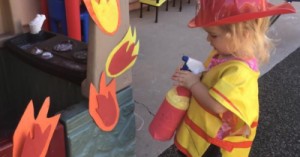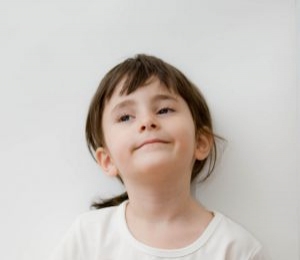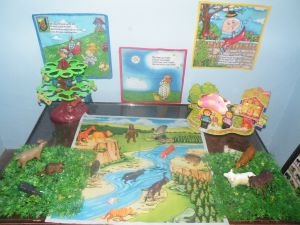Children of all ages face problems; while a three-year-old may be struggling to button up a shirt, a five-year-old might feel stuck with a challenging puzzle. Indeed as they grow older, the variety and complexity of problems can only increase. The following article provides information on problem-solving strategies for children so that they eventually learn to look for solutions on their own.
Identify The Problem
Children, like the best among us, often get bogged down by the consequence of a problem, rather than the cause. So a child may be frustrated at not completing a colouring task in time whereas the real problem may be difficulty in finding the right colours. A useful starting point may then be helping your learners identify the specific problem by saying something like, “Show me the hard part.” This makes it easier to identify the root of the problem and makes it less overwhelming.
When dealing with interpersonal problems, teach children to take responsibility for what happened rather than levelling accusations. Thus instead of saying, “Carlos got me in trouble at recess”, help the child say, “I got in trouble at recess for quarrelling with Carlos.”
Elicit Likely Solutions
Once the child is able to pinpoint the exact problem, they can usually come up with solutions themselves - with just a bit of prompting. So you might ask Gina what would help her avoid getting into an argument with Carlos.
If your learners cannot seem to come up with answers, help them brainstorm a few ideas. But instead of coming up with the suggestions yourself, use questions to elicit responses that point in the desired direction. For example, if a child is struggling to complete a jigsaw puzzle, ask, “How do you think the top of a rooster’s head looks like?” and then suggest they look for such a puzzle piece.
Exploring Possibilities
When working with older kids, ask what they think would happen if their solutions are implemented. Encourage them to consider if the solution is fair to others or how it might make someone else feel. With younger kids, you can try role-playing to help them understand possible outcomes since it is necessary that children learn to figure out both the positive and negative fallout of their actions.
Allow For Mistakes
Even after going through all the right steps, it is quite likely that the solution won’t work. If this happens, invite the child to think about why and then move on to another solution. A good idea is to support them with emotional skills like resilience and patience besides teaching them how to process disappointments and frustration.
Integrate With Learning
Use classroom learning opportunities to hone problem-solving skills.
- When children play with blocks, lego and puzzles, they use their analytical skills which in turn strengthens problem-solving processes.
- Read or tell stories in which the major characters come upon obstacles. Pause at certain points in the narrative to ask your learners if they can think of ways to solve the character’s problems.
Encourage a variety of suggestions and discuss possible consequences. Look for ways to relate the character’s dilemmas to events in the children’s own lives so that they have a deeper understanding of problem-solving scenarios.
Further Reading
Importance Of Puzzles In Early Childhood - The following article provides information on the benefits of puzzles for children.
EYLF Outcome 4 - Children Are Confident And Involved Learners V2.0 - The following lists the sub-outcomes, examples of evidence when children achieve each sub-outcome and how educators can promote and help children to achieve EYLF Outcome 4 - Children Are Confident And Involved Learners V2.0.







 Open ended questions cannot be responded to with one word answers such as yes or no. These types of questions enables a child to provide
Open ended questions cannot be responded to with one word answers such as yes or no. These types of questions enables a child to provide During your child’s preschool years, an important milestone begins to emerge. This is the development of pre-writing skills. Pre-writing skills are used to encourage, develop
During your child’s preschool years, an important milestone begins to emerge. This is the development of pre-writing skills. Pre-writing skills are used to encourage, develop Open ended materials enables children to play freely. They are objects that have no rules to follow, use or function. Raw materials that can be
Open ended materials enables children to play freely. They are objects that have no rules to follow, use or function. Raw materials that can be An Acknowledgment of the Country is a way of showing respect for the Traditional Owners and can be given by both non-Indigenous people and Aboriginal
An Acknowledgment of the Country is a way of showing respect for the Traditional Owners and can be given by both non-Indigenous people and Aboriginal Language plays an important role in a child’s development. It enables a child to communicate effectively with their family, learn at school, socialize with friends,
Language plays an important role in a child’s development. It enables a child to communicate effectively with their family, learn at school, socialize with friends, Like adults, children have to deal with their own stress in life. Moving house, starting a new school, preparing for a new sibling - these are
Like adults, children have to deal with their own stress in life. Moving house, starting a new school, preparing for a new sibling - these are Playdough is such a versatile material. It provides numerous benefits to children as they manipulate it, it is safe and soothing and provides children with
Playdough is such a versatile material. It provides numerous benefits to children as they manipulate it, it is safe and soothing and provides children with Teaching children about sustainability enables them to appreciate and respect the natural environment. Early childhood services can provide meaningful hand on learning experiences in order
Teaching children about sustainability enables them to appreciate and respect the natural environment. Early childhood services can provide meaningful hand on learning experiences in order Recycling is an important concept that teaches children to care for the environment. It encourages children to be responsible and show a growing appreciating for
Recycling is an important concept that teaches children to care for the environment. It encourages children to be responsible and show a growing appreciating for When children apply paint to paper, glue things together, or pound a lump of clay, they experiment with colour, shape design and texture.
When children apply paint to paper, glue things together, or pound a lump of clay, they experiment with colour, shape design and texture.



